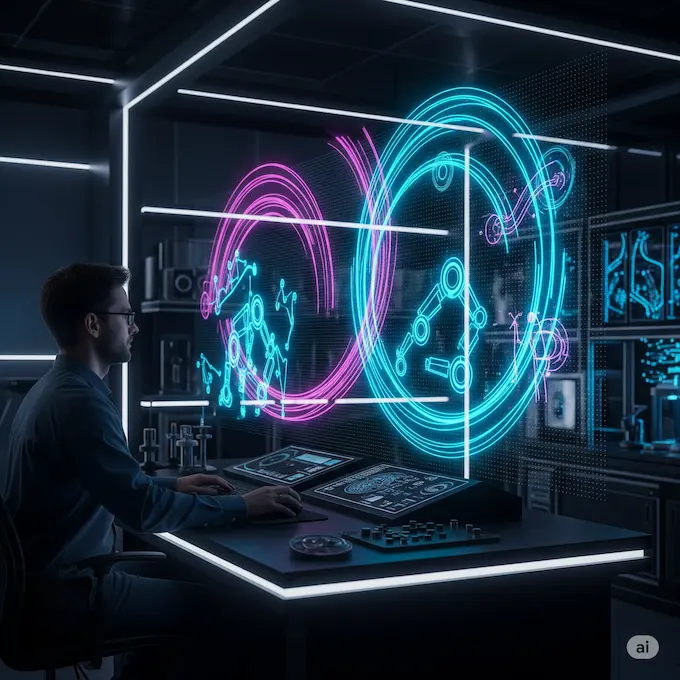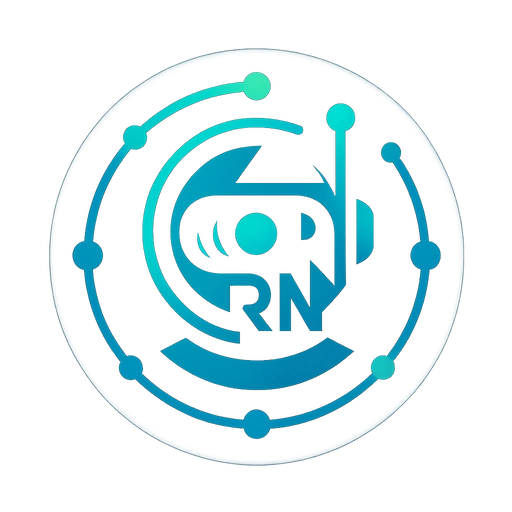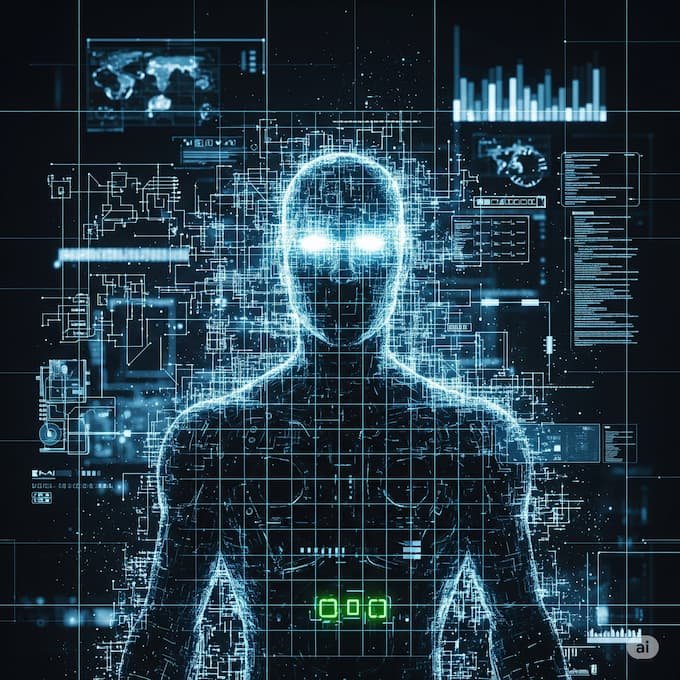The last decade of AI has transformed what software can understand. The next decade will transform what machines can do. Nvidia’s push into humanoid robotics, weaving together the Isaac GR00T program, the foundation Nvidia GR00T N1 model, synthetic data engines, orchestration platforms, and high-end edge computers, aims to make generalist robots useful in the physical world much sooner than many expected.
Nvidia’s leadership frames robotics as a “multitrillion-dollar” opportunity powered by AI models, simulation, and new physics tooling, and the company is now shipping pieces that let developers train, test, and deploy humanoid skills end-to-end. Nvidia GR00T N1 unites simulation, foundation models, synthetic data, and edge compute to accelerate humanoid generalist robotics.
This guide unpacks what Nvidia GR00T N1 humanoid robots really are, why the GR00T N1 model is different, how the surrounding Isaac toolchain fits together, where the hardware (like Jetson Thor) comes in, and how GR00T compares with Tesla Optimus, Boston Dynamics Atlas, Figure 02, and others. You’ll also find use cases, pros and cons, a roadmap, and answers to common questions.
Table of Contents
Foundation model for robots:
GR00T (Generalist Robot 00 Technology) is Nvidia’s research initiative and development platform for building robot foundation models andNvidia GR00T N1 the data pipelines to train them. The goal is to enable humanoid robots that understand instructions, generalize across embodiments, and carry out diverse tasks with learned skills rather than brittle scripts. Nvidia positions GR00T as the connective tissue between large multimodal models, massive synthetic data generation, and real-world robot execution.
In 2025, Nvidia introduced Isaac GR00T N1, which it calls the world’s first open humanoid robot foundation model, designed for generalized skills and reasoning across different robot bodies. It’s trained on heterogeneous sources, egocentric human videos, real and simulated robot trajectories, and synthetic data, then adapted to specific tasks and platforms.
2. Why GR00T N1 Matters
Traditional industrial robots excel in highly constrained settings. Humanoids, by contrast, must navigate unstructured spaces and interact with objects designed for humans. Nvidia’s GR00T N1 takes multimodal inputs (language + vision) and outputs language-guided manipulation and mobility behaviors. The model is architected for cross-embodiment learning so a skill learned in simulation or on one robot can be adapted to another with lower data requirements. Media coverage from GTC emphasized a dual-system approach inspired by human cognition, fast reflexive responses (System 1) for latency-critical control and deliberate reasoning (System 2) for planning, paired with open training assets to accelerate community adoption.
For teams building humanoids, that means less time hand-coding behaviors and more time leveraging foundation-model-powered capabilities that transfer across tasks, scenes, and bodies.
3. The Isaac GR00T Data Engine: Synthetic First
A major blocker in robotics is data: learning robust, dexterous skills typically requires vast demonstrations that are slow and expensive to collect. Nvidia’s answer is a synthetic-first pipeline:
- GR00T Blueprint for Synthetic Motion Generation: a reference workflow (built on Omniverse and Cosmos) that scales small human demonstration sets into exponentially larger manipulation motion datasets for training.
- GR00T-Dreams Blueprint: generates massive synthetic trajectory data from a single image + language prompt, using world models to produce diverse scenes and variations that richly supervise manipulation and mobility tasks.
- Open-source Newton Physics Engine (with Google DeepMind and Disney Research): next-gen physics for accurate, performant simulation of contact-rich skills (grasping, assembly, bimanual tasks).
Together, these tools aim to create a data flywheel: generate—>train—>evaluate—>deploy—>log—>synthesize more data—>repeat.
4. Core Tools in the Isaac Robotics Stack
Nvidia’s stack is meant to be modular; you can adopt pieces or go end-to-end.
- Isaac Sim (on Omniverse): physically based simulation, OpenUSD workflows, and synthetic data generation; extendable for custom simulators and integration into existing pipelines.
- Isaac Lab: a lightweight training app inside Isaac Sim for scaling reinforcement and imitation learning (commonly used for GR00T research).
- OSMO: a cloud-native orchestration layer to schedule, scale, and monitor distributed training, simulation, and data jobs across on-prem and cloud clusters.
- Isaac ROS (ROS 2): acceleration libraries and perception models that plug into the ROS 2 ecosystem.
This platformization is deliberate: the more standard the tooling, the lower the barrier for startups and labs to ship useful behaviors.
5. Hardware: Jetson Thor at the Edge
To move from lab to floor, robots need serious on-board compute. Jetson Thor is Nvidia’s flagship humanoid-class edge computer, delivering up to 2070 FP4 TFLOPS and up to 128 GB memory, with configurable power envelopes 40–130 W. Nvidia pitches >7.5× the AI compute of AGX Orin and 3.5× better energy efficiency, targeting dexterous control, perception, and on-device inference without constant cloud dependency.
Nvidia articulates a three-tier platform for humanoids: train on AI supercomputers, learn/refine in Isaac Sim, and deploy on Jetson Thor, with OSMO managing the workloads in between.

6. How GR00T N1 Works (High-Level)
- Inputs: text prompts (“Pick up the blue screwdriver and place it in slot A”), images/egocentric video from head-mounted or robot cameras, and proprioceptive signals.
- Core model: a Vision-Language-Action (VLA) foundation model that maps multimodal observations to action policies. It supports cross-embodiment transfer, enabling reuse of skills across robot morphologies.
- Control: fast reflex loops for low-latency stability and safety, coupled with slower deliberative plans for multi-step tasks (as highlighted in press coverage around GTC).
- Training data: mixed (human egocentric, real robot logs, synthetic/Sim), with open blueprints that help teams grow custom datasets.
7. Where Humanoids Fit: Early Use Cases
- Factory material handling & kitting
Humanoids can move totes, stage components, perform bin-picking and basic assembly. Synthetic trajectories plus Isaac Sim let teams rehearse tasks before deployment; Jetson Thor provides the on-board inference budget to run multi-camera perception with dexterous control loops. - Logistics & fulfillment
Shelf restocking, order picking, pallet breakdown, and exception handling in brownfield warehouses where fixed automation is costly. Foundation-model planning plus fast reflex control helps cope with clutter and variability. - R&D and prototyping
Universities and labs benefit from open model assets and simulation blueprints (e.g., Newton physics, GR00T-Dreams) to accelerate research into dexterity, bimanual manipulation, and language-conditioned tasks. - Entertainment & service
Disney’s collaboration around Newton demonstrates lifelike expressivity and safe contact physics for robots interacting with guests, an early proving ground for complex, human-proximate behaviors that will also matter in industry.
8. Nvidia GR00T vs. Tesla Optimus vs. Figure 02 vs. Boston Dynamics Atlas
“How Nvidia GR00T humanoid robots differ from Boston Dynamics robots”
The humanoid space is moving fast. Nvidia’s unique angle is platform + model + silicon rather than building a single branded robot. Below is a high-level snapshot based on public information and 2024–2025 reporting.
| Cons / Risks | Why it matters |
|---|---|
| Early-stage deployment | Many capabilities are emerging; real-world reliability and ROI must be proven at scale. NVIDIA Newsroom |
| Complex integration | Brownfield facilities vary widely; perception, grasping, and safety certification take time. (General industry reality; implied across sources.) |
| Data-domain gaps | Synthetic data helps, but bridging sim-to-real for contact-rich manipulation still demands careful tuning. NVIDIA Developer |
| Cost and power envelope | High-end sensors, actuators, and compute raise BOM and power considerations; business case must pencil. NVIDIA |
Sources: Nvidia news and developer materials; third-party coverage summarizing GTC announcements and capabilities.
9. Advantages and Limitations of Nvidia GR00T Humanoid Robots
| Pros | Why it matters |
|---|---|
| Open, customizable foundation model (GR00T N1) | Lowers barrier to entry for labs and startups; easier fine-tuning for new tasks and embodiments. NVIDIA Newsroom NVIDIA Developer |
| Synthetic-first data pipeline | Rapidly scales training data beyond what’s feasible with manual demos; accelerates dexterity and long-horizon skills. NVIDIA Developer |
| Full-stack platform (Sim → Orchestration → Edge) | Fewer integration headaches: Isaac Sim, OSMO, and Jetson Thor are designed to work together. NVIDIA Developer NVIDIA |
| Ecosystem leverage (ROS 2, partners) | Taps into the ROS 2 community and partner hardware to grow quickly. NVIDIA |
| High-performance edge compute | Thor’s compute/efficiency supports multi-camera perception + bimanual control on-device. NVIDIA |
| Cons / Risks | Why it matters |
|---|---|
| Early-stage deployment | Many capabilities are emerging; real-world reliability and ROI must be proven at scale. NVIDIA Newsroom |
| Complex integration | Brownfield facilities vary widely; perception, grasping, and safety certification take time. (General industry reality; implied across sources.) |
| Data-domain gaps | Synthetic data helps, but bridging sim-to-real for contact-rich manipulation still demands careful tuning. NVIDIA Developer |
| Cost and power envelope | High-end sensors, actuators, and compute raise BOM and power considerations; business case must pencil. NVIDIA |
10. Market Outlook: Why 2025–2027 Is a Pivotal Window
Nvidia is explicit: generalist robotics has arrived. The company’s CEO calls robotics a multitrillion-dollar runway as manufacturing, logistics, and services adopt foundation-model-enabled machines. The combination of open model assets, synthetic data engines, better physics, and humanoid-class edge compute is compressing cycle time from research to pilot. Analysts and industry press expect meaningful pilots through 2025–2026, with broader rollouts as economics improve and robots handle more tasks with less bespoke engineering.

11. Practical Path to Deployment with GR00T N1 (Step-by-Step)
- Scope tasks (e.g., kitting, tote moves, screwdriving) and define success metrics (cycle time, success rate, MTBF).
- Simulate the workcell in Isaac Sim using OpenUSD assets; generate varied scenes and objects; add realistic sensors.
- Data generation using GR00T Blueprint (for manipulation) and GR00T-Dreams (for trajectory diversity) to scale beyond limited demos.
- Train & evaluate models with OSMO orchestrating multi-GPU training and batch simulation runs; log and compare policies.
- Deploy on a humanoid platform with Jetson Thor, instrument safety layers, and monitor performance; feed logs back into the data flywheel.
12. Detailed Feature List (GR00T Stack)
- Foundation Model (GR00T N1): open, customizable, VLA model; language-conditioned policies; cross-embodiment skill transfer.
- Cognition Architecture: reflexive control for stabilization and response; deliberative planning for multi-step tasks.
- Data Pipelines: synthetic motion expansion (GR00T Blueprint), world-model trajectories from minimal prompts (GR00T-Dreams), and Newton physics engine R&D.
- Toolchain: Isaac Sim / Omniverse for simulation and synthetic data; Isaac Lab for training; OSMO for orchestration; Isaac ROS for real-time modules.
- Edge Compute: Jetson Thor (up to 2070 FP4 TFLOPS, 40–130 W, up to 128 GB memory).
13. Example Comparison Table: Task Readiness
| Task Type | GR00T-N1 Approach | What Helps It Succeed | Caveats |
|---|---|---|---|
| Bin picking & part staging | Language-guided grasping with cross-view perception | Synthetic trajectories + reflex control for contact | Small parts/reflective surfaces still challenging |
| Kitting & assembly prep | Plan-then-act with visual grounding in Sim | Blueprint-generated motion datasets | Tight tolerances require careful calibration |
| Screwdriving / fastening | Bimanual coordination, torque/force-aware policies | High-fidelity physics (Newton) + closed-loop sensing | Tool slippage/bit alignment |
| Tote transfer & pallet breakdown | Whole-body balance + object pose estimation | Jetson Thor compute for multi-camera fusion | Heavy loads demand robust actuators & grippers |
(Approaches and enablers summarized from Nvidia’s model/tooling descriptions and developer blogs.)
Conclusion
Nvidia GR00TN1 humanoid robots aren’t a single product, they’re an architecture and ecosystem that fuses a foundation model (GR00T N1), synthetic-first data generation, high-fidelity simulation, orchestration, and edge compute into one pipeline. The result is a credible path to language-driven, cross-embodiment skills that transfer from sim to shop floor. There’s still plenty to prove in safety, reliability, and unit economics. But the direction is clear: foundation models and synthetic data will do for humanoids what pretrained LLMs and synthetic corpora did for language, make general-purpose capability the starting point rather than the destination.“As businesses adopt Nvidia GR00T N1 humanoid robots, the shift from specialized automation to general-purpose robotics becomes unstoppable.”
If you’re evaluating humanoids for your operation, start with one or two well-scoped tasks, build a sim-first workflow with Isaac Sim, lean on GR00T Blueprint and GR00T-Dreams to scale your data, and pilot on Jetson Thor hardware in a controlled cell. The feedback loop you build now becomes your durable advantage later.
Sources & Further Reading
- Nvidia Newsroom — “Isaac GR00T N1: the world’s first open humanoid robot foundation model,” Newton physics engine collaboration. NVIDIA Newsroom
- Nvidia Research — “Isaac GR00T N1: an open foundation model for humanoid robots” (model overview + training corpus). NVIDIA
- Nvidia Developer Blog — GR00T N1 features and cross-embodiment capabilities. NVIDIA Developer
- Nvidia Developer Blog — GR00T Blueprint for synthetic manipulation motion generation. NVIDIA Developer
- Nvidia Developer Blog — GR00T-Dreams: synthetic trajectory data from a single image + prompt. NVIDIA Developer
- Isaac Sim (Omniverse) — simulation and synthetic data platform. NVIDIA Developer
- OSMO — cloud-native orchestration for training/simulation at scale. NVIDIA Developer
- Isaac ROS (ROS 2) — accelerated robotics libraries and models. NVIDIA
- Jetson Thor — humanoid-class edge compute specs. NVIDIA
- The Verge — “The age of generalist robotics is here” (GTC coverage of GR00T N1 and dual-system control). The Verge
- Financial Times — robotics as a multitrillion-dollar opportunity (industry context). Financial Times
- Business Insider — Disney + Nvidia + DeepMind “Newton” collaboration (expressive, physics-accurate robots). Business Insider
- What is Nvidia GR00T N1 humanoid robots foundation model?
It’s an open, customizable foundation model for humanoid robots that takes language and visual inputs and outputs actions for manipulation and mobility. It’s trained on mixed data human egocentric video, real/sim robot logs, and synthetic data and is designed for cross-embodiment transfer.
- How is GR00T N1 different from previous robot stacks?
GR00T emphasizes foundation models + synthetic data at scale, rather than hand-tuned task scripts. Developers use Isaac Sim, GR00T Blueprint/Dreams, and OSMO to generate vast training corpora, then deploy on Jetson Thor
- Is production of Nvidia GR00T N1 ready today?
It’s available to developers and already used in demos and early pilots, but like all humanoid stacks, broad industrialization will take staged validation for safety, reliability, and economics.
- Does it only work with Nvidia hardware?
Training and simulation are hardware-agnostic at a high level, but Nvidia’s reference path targets Omniverse/Isaac for sim, OSMO for orchestration, and Jetson Thor for on-board inference because of performance per watt and tight integration.
- How do developers get started?
Model and blueprint resources are documented on Nvidia’s developer portals. Typical flow: define tasks → simulate in Isaac Sim → generate data with GR00T Blueprint/Dreams → train with OSMO → deploy on a humanoid with Jetson Thor.
- What about entertainment and consumer robots?
Disney’s work with Nvidia and Google DeepMind on Newton shows how improved physics and control can drive expressive, safe interactions—useful for parks now and for service/consumer robots later.
- Why is 2025 such a big year for humanoids?
Because the tooling stack (foundation models, synthetic data engines, better physics) and edge compute (Jetson Thor-class) have arrived together. Nvidia’s leadership and media coverage argue that “the age of generalist robotics is here.”


